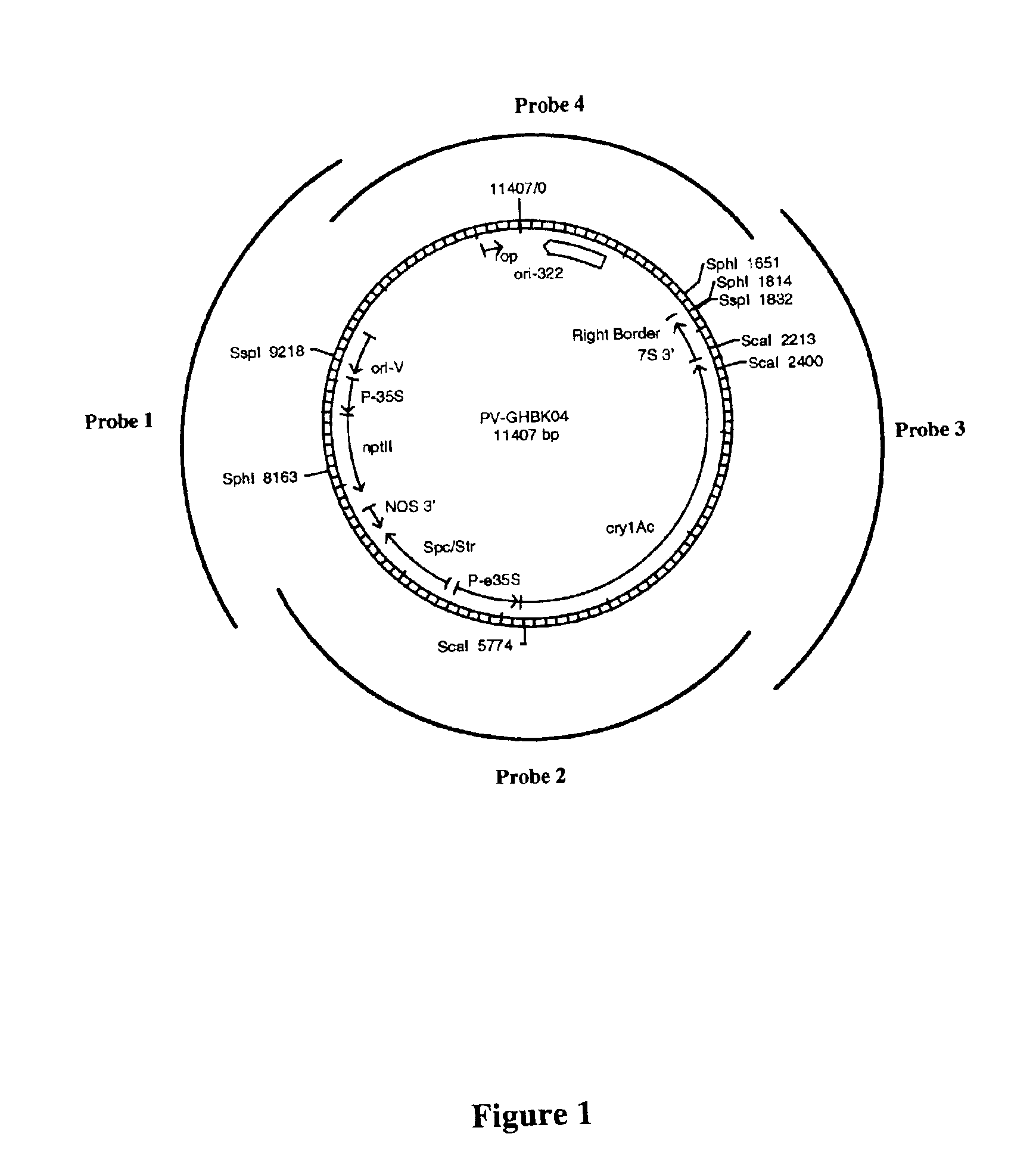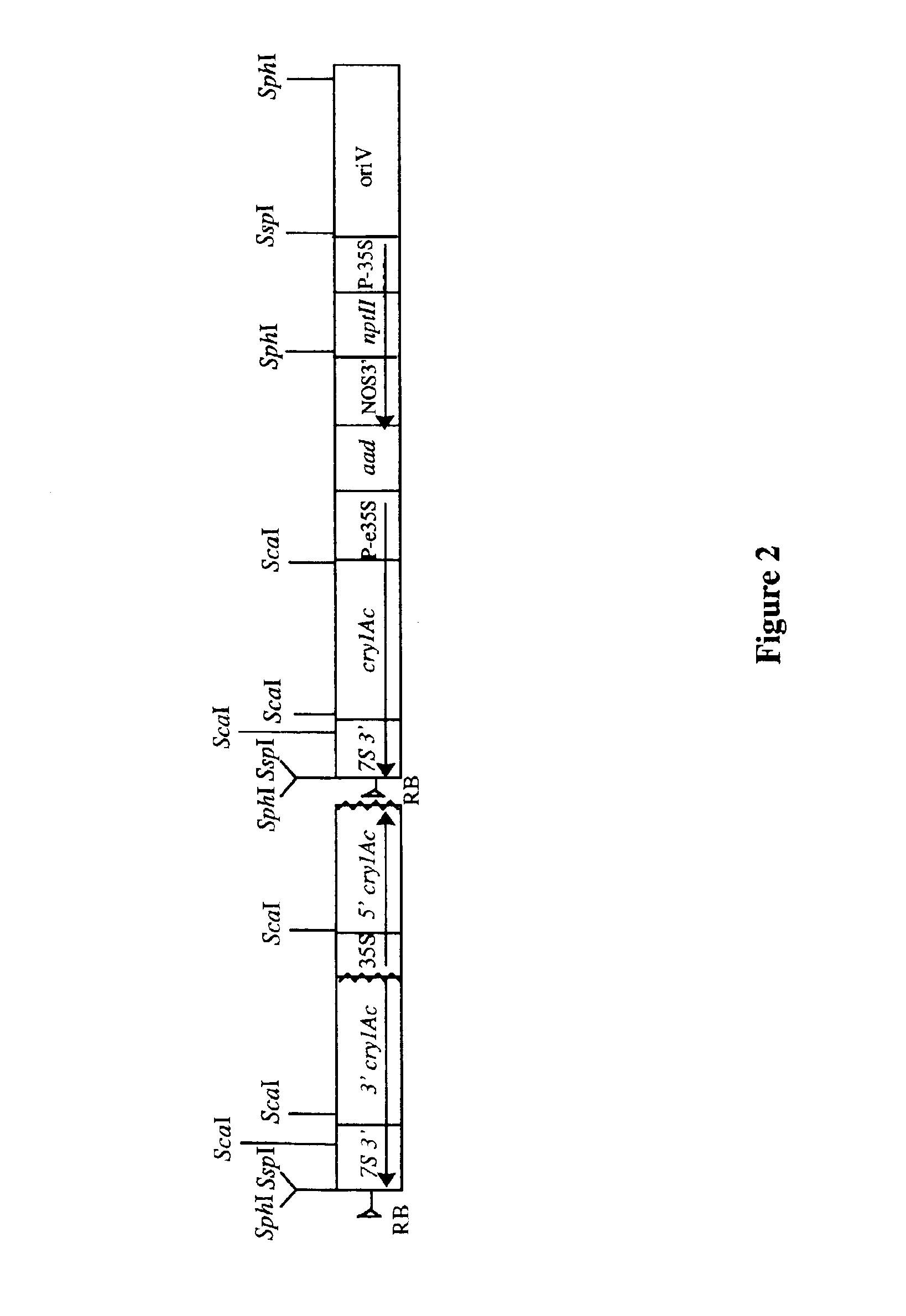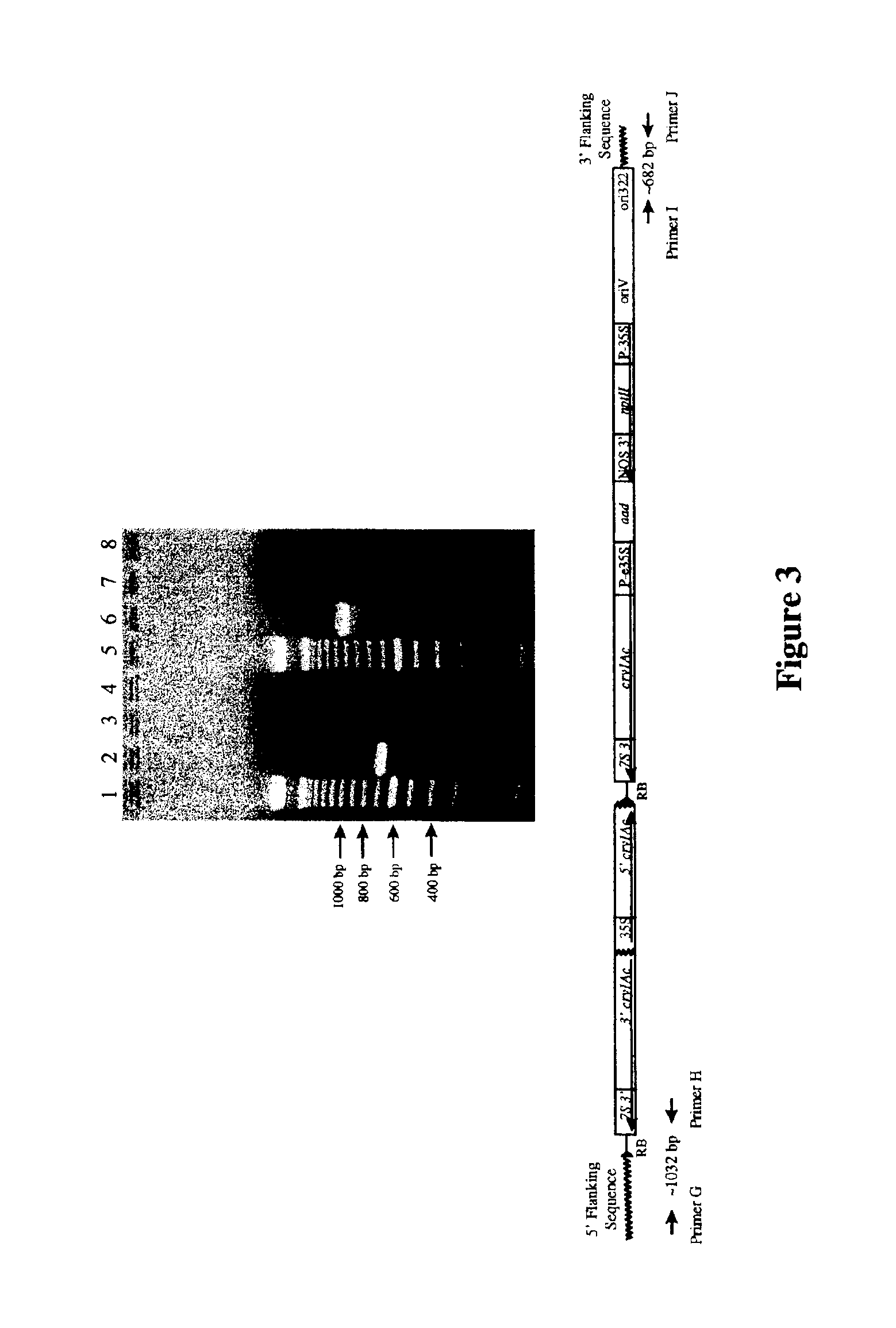Cotton event PV-GHBK04 (757) and compositions and methods for detection thereof
- Summary
- Abstract
- Description
- Claims
- Application Information
AI Technical Summary
Benefits of technology
Problems solved by technology
Method used
Image
Examples
example 1
Cotton event PV-GHBK04 (757)
[0072]Lepidoptera species infestation of cotton fields exerts a negative impact on cotton production. Cotton species, and in particular Gossypium hirsutum, have been genetically modified to resist Lepidoptera insect infestation. One means for producing plants, which are resistant to insect infestation comprises the insertion of a DNA cassette that contains a sequence encoding an insecticidal Cry1A protein, derived from the bacterium Bacillus thuringiensis into the genome of cotton cultivar Coker 312. Cotton plants can be transformed using a variety of means, however, in this case cotton plants were transformed using an Agrobacterium tumefaciens mediated transformation system using a DNA fragment derived from plasmid PV-GHBK04 (pMON 10518 in U.S. Pat. No. 5,500,365). Plant selection after transformation of cotton cells and regeneration of transgenic plants resulted in the instant insect resistant cotton event 757.
[0073]Molecular analyses were performed on ...
example 2
Restriction Enzyme Digestion of Genomic DNA
[0074]Approximately 10 μg of genomic DNA from each of the test and control lines was used for restriction enzyme digestions. Overnight digests were performed according to the manufacturers' instructions in a total volume of 500 μL using 100 units of the appropriate restriction enzyme. After digestion, the samples were precipitated by adding {fraction (1 / 10)} volume (˜50 μL) of 3 M NaOAc, pH 5.2, and 2 volumes (˜1 mL relative to the original digest volume) of 100% ethanol, followed by incubation in a −20° C. freezer for at least one hour. The digested DNA was pelleted at maximum speed in a microcentrifuge, washed with 70% ethanol, vacuum dried for approximately 4 minutes, and re-dissolved at room temperature in water.
example 3
DNA Probe Preparation for Cotton Event 757 Genomic DNA Southern Blots
[0075]Four DNA probe templates were prepared by thermal amplification using PV-GHBK04 as a template. The probes were designed to collectively span nearly the entire sequence of PV-GHBK04 (FIG. 1). Approximately 25 ng of each probe template were labeled with 32P-dCTP (6000 Ci / mmol) using a random priming method (RadPrime DNA Labeling System, Gibco BRL, Gaithersburg Md.). All radiolabeled probes were purified using a Sephadex G-50 column (Boehringer Mannheim).
PUM
| Property | Measurement | Unit |
|---|---|---|
| Temperature | aaaaa | aaaaa |
| Temperature | aaaaa | aaaaa |
| Temperature | aaaaa | aaaaa |
Abstract
Description
Claims
Application Information
 Login to View More
Login to View More - R&D
- Intellectual Property
- Life Sciences
- Materials
- Tech Scout
- Unparalleled Data Quality
- Higher Quality Content
- 60% Fewer Hallucinations
Browse by: Latest US Patents, China's latest patents, Technical Efficacy Thesaurus, Application Domain, Technology Topic, Popular Technical Reports.
© 2025 PatSnap. All rights reserved.Legal|Privacy policy|Modern Slavery Act Transparency Statement|Sitemap|About US| Contact US: help@patsnap.com



